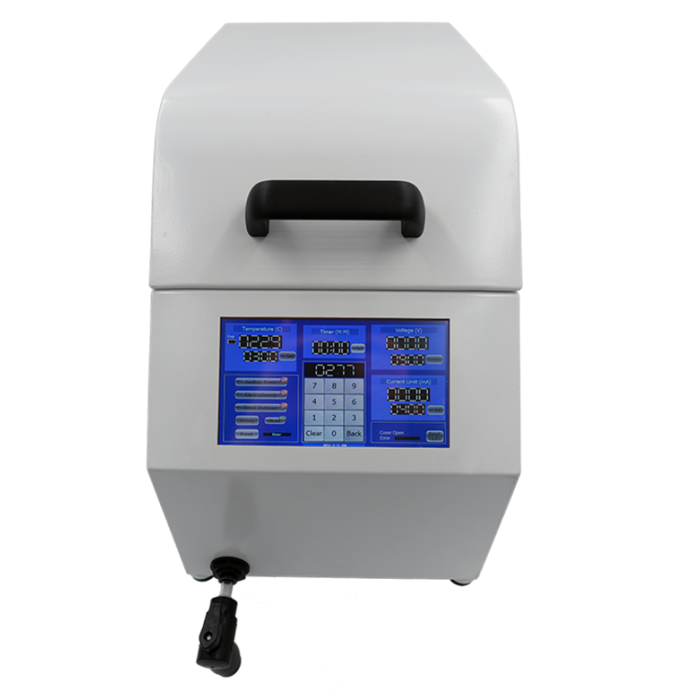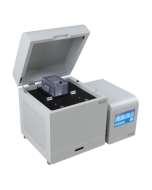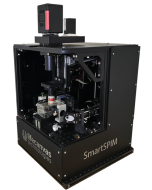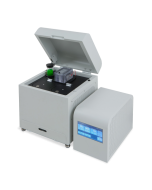SmartBatch+: Electrophoretic tissue clearing & immunolabeling
SmartBatch+: New high-throughput system for rapid active tissue clearing and immunolabeling.
Our easy-to-use system combines active tissue clearing and immunolabeling into one high-throughput device, allowing you to switch between clearing and labeling modes simply by changing buffers. SmartBatch+ is compatible with different tissue types and large intact samples.
An advance on our founder’s CLARITY tissue clearing method, Clear+ provides maximum optical transparency with no tissue expansion or contraction. In immunolabeling mode, eFLASH and patented SE technologies uniformly label whole organs. Unlike other methods like iDISCO and CUBIC, SmartBatch+ actively preserves fluorescent protein signal.
Consistent histological data
SmartBatch+ actively clears and labels up to 12 whole mouse brains or comparably sized samples in as little as one day, and 2 whole rat brains in just 3-4 days! This provides unparalleled consistency for multiple treatment groups. Its small footprint also allows ample space for multiple devices.
Fast, cost-effective clearing & immunolabeling
Use just 4-20 μg of antibody per target to label a sample the size of a whole mouse brain — up to an order of magnitude less than passive staining. Save hundreds of dollars per sample per antibody, in primary antibody alone! SmartBatch+’s turnkey design is also labor-efficient, requiring <12 mins hands-on time per sample to clear and label.
High quality sample integrity for 3D imaging
SmartBatch+ combined with SHIELD tissue preservation protects fluorescent protein signal, antigenicity, and molecular and physical architecture through all tissue processing steps. Clear+ is currently the only tissue clearing technique that preserves sample morphology. This ensures your samples will produce information-rich images.
Our Technology
SHIELD
Protection of tissue physicochemical properties using polyfunctional crosslinkers (Park et al., Nature Biotechnology 2018)
SHIELD is a tissue preservation technique that complements and enhances the standard PFA fixation of biological tissue. It requires a series of incubation steps over 4-6 days to preserve a tissue sample the size of a whole mouse brain. These steps allow epoxide molecules to diffuse into the tissue and crosslink, forming a strong skeleton that anchors proteins, enzymes, nucleic acids, and other important elements of tissue architecture.
This preparation step is necessary for active clearing or immunolabeling, as exposure to harsher chemicals or environments can strip away important targets in non-SHIELD-preserved tissue. The strong fixation of native proteins also allows for multiplex labeling.
SWITCH
Simple, Scalable Proteomic Imaging for High-Dimensional Profiling of Intact Systems (Murray et al., Cell 2015)
The SWITCH method introduces a simple process for controlling a wide variety of chemical reactions during tissue processing of large animal and human samples. SWITCH ensures uniformity of preservation and immunolabeling via synchronization of chemical reactions throughout the entire sample.
There are 2 basic steps:
- SWITCH-OFF: chemicals and buffers are allowed to diffuse freely throughout the tissue, and chemical reactions are suppressed
- SWITCH-ON: buffer environment is rapidly changed to a condition allowing chemical reactivity.
Tissue architecture, native biomolecules, and antigenicity are highly preserved, allowing for >20 rounds of labeling.
STOCHASTIC ELECTROTRANSPORT
Stochastic electrotransport selectively enhances the transport of highly electromobile molecules (Kim et al., PNAS 2015)
Stochastic electrotransport (SE) is a patented, novel method for rapid, nondestructive processing of porous samples. Processes like delipidation and immunolabeling have historically been limited by diffusion time, particularly for large samples such as intact mouse brains. Antibodies may take weeks to diffuse through only a few millimeters of tissue, with a steep labeling gradient from surface to core.
SE uses a rotational electric field to disperse highly electromobile molecules (such as antibodies or surfactant micelles) throughout a porous sample without damaging electrically charged structures within the tissue. This enables 2-4 day clearing of intact organs, <24 hour staining with nuclear dyes, proteins, and antibodies, and incredible labeling uniformity.
eFLASH
Ultrafast immunostaining of organ-scale tissues for scalable proteomic phenotyping (Yun et al., bioRxiv 2019)
eFLASH is a rapid tissue labeling technique that allows for uniform whole-organ staining in <24 hours.This method combines stochastic electrotransport with modulation of antibody binding affinity via reaction conditions to enable uniform antibody diffusion without saturation at surface targets.
Initially, high pH and high NADC concentration prohibit antibody binding. During the experiment, pH and NADC concentration are gradually lowered and antibody affinity gradually increases, leading to antibody binding as antibodies are driven in by the electric field. By the end of the experiment, pH has been neutralized, NADC concentration is low, and most antibodies are uniformly bound throughout the sample.





